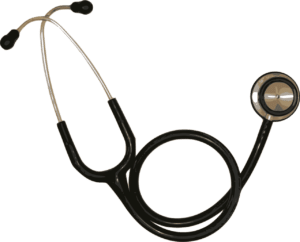google.com, pub-1774094383129965, DIRECT, f08c47fec0942fa0
google.com, pub-1774094383129965, DIRECT, f08c47fec0942fa0
Prescription
Prescription. Pain Medication from the Pharmacy

Narcotic pain medications are sometimes used to treat back pain. Fentanyl, Hydrocodone, Oxycodone, Methadone, Morphine, and Oxymorphone are the most common.
Narcotic medications change the brains perception of pain by weakening the pain signals. These medications are medically termed opioids.
The body increases tolerance to opioids over time, so they are most often used to deal with acute pain.
In 1970, the FDA released classifications which organizes drugs into groups based on risk of abuse or harm. Drugs that are considered the most dangerous by the DEA are known as Schedule I substances. Schedule II drugs are also considered highly addictive with a dangerous potential for abuse. Schedule III substances have a low to moderate potential for physical and psychological dependence. Schedule IV have a low probability for misuse and abuse. Schedule V controlled Substances have a low potential for abuse relative to substances listed in Schedule IV.
Schedule I
Schedule I drugs include substances like Heroin, LSD, Marijuana, Ecstasy, Quaaludes, and Bath Salts. According to the FDA there is little or no use for these drugs as medical treatment. They are considered to be highly addictive. Even so, marijuana is gaining ground in acceptance as being used for seizures and pain relief.

Schedule II
Schedule II drugs are considered medically acceptable in particular cases, like for treating chronic pain or addiction. They are considered to be highly addictive with a potential for abuse. Examples of Schedule II drugs include Methadone, Demerol, OxyContin, Fentanyl, Morphine, and Codeine.
Schedule III
Schedule III drugs include Vicodin,Tylenol with codeine, Suboxone, Ketamine, and Anabolic steroids. These drugs can lead to abuse or addiction if they are misused.
Schedule IV
Examples of Schedule IV drugs include Xanax, Soma, Klonopin, Valium, and Ativan.
Schedule V Controlled Substances
Substances in Schedule V have a low potential for abuse relative to substances listed in Schedule IV.

Lower Back Pain Prescription Medicine
Fentanyl
Use of transdermal fentanyl is an alternative to oral opioids for managing chronic low back pain. The degree of pain relief will vary from patient to patient. It is a very strong medication. Fentanyl is a stronger pain medication than morphine or heroin.
Hydrocodone
Hydrocodone is designed for pain that is moderate to moderately severe.
Oxycodone
Oxycodone is often combined with a non-narcotic pain reliever, such as acetaminophen or aspirin. Oxycodone is for moderate to severe pain. Opioids, such as oxycodone interact with receptors on nerve cells in the body and brain to reduce pain. This is a strong pain drug and can put you at risk for addiction.
Methadone
Methadone is used to treat pain as well as for detoxification from other narcotics. The FDA noted that the pain relief from methadone lasts about 4-8 hours, but the drug’s elimination from the body can take up to a week. It is important to closely manage dosage.
Methadone can be an effective drug for treating chronic pain.
Morphine
Morphine is used to ease pain. It works on your nervous system and brain to reduce the amount of pain you feel. Benefits from long term use is debatable.
Oxymorphone
Oxymorphone is a potent schedule II opioid analgesic drug. It is used for the relief of moderate to severe pain. It can be habit forming, especially with prolonged use. It works by changing the way the body responds to pain.
Buprenorphine
Buprenorphine is a strong painkiller related to morphine. It is used to relieve moderate to severe pain. It is used less frequently than other opioid painkillers because it can oppose the effects of other opioid painkillers that may be given at the same time.








